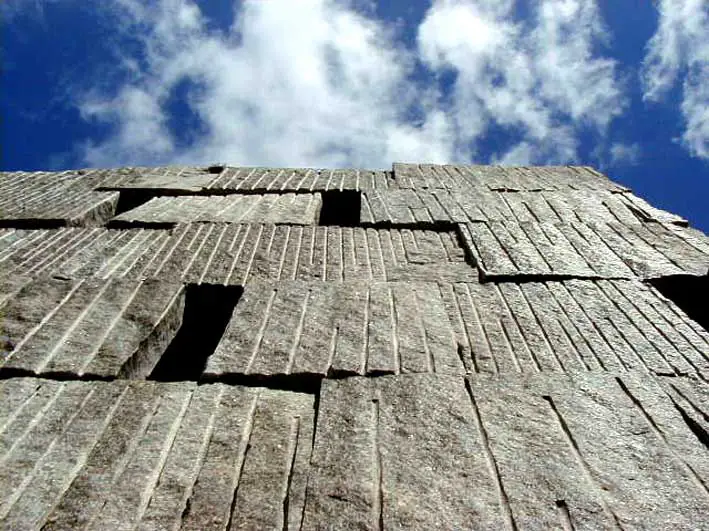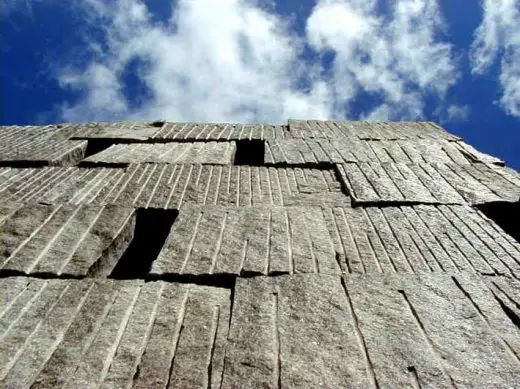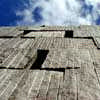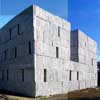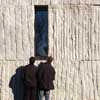Musical Studies Centre Santiago de Compostela, Spanish Building Design Image
Musical Studies Centre in Santiago de Compostela, Galicia
Vista Alegre Development in Galicia, north west Spain design by Ensamble Studio
21 Jan 2010
Musical Studies Centre Santiago de Compostela
Design: Ensamble Studio, Architects
Location: Santiago de Compostela, Galicia, northwest Spain
Musical Studies Centre Santiago de Compostela
The project of the Musical Studies Centre in Santiago de Compostela is located in the Vista Alegre plot of land, one of the most relevant green areas in the surroundings of the old quarter of Santiago.
Described as a university park, the Vista Alegre plot of land hosts a group of buildings link to activities related to academic and research practices. Here it’s possible to find the House of Europe, the Advanced Studies Centre, the IDEGA (a university research centre) and the Centre for Musical Studies, dedicated to postgraduate studies for musical improvement, intended for the training of the Galician Orchestra musicians.
The proposal has its origins in a competition asking for the insertion of a pavilion which program demanded the development of classrooms for the education of music, with defined volumetry, highness, occupation and materials, in a non-symmetric exercise, as it is set against the pavilion built by Portela, made of the same materials and similar dimensions.
The perception of the building at different scales defines levels of comprehension. From the distance, the building lets itself fall on the land. It sticks, without any continuity, to a carpet of green grass that makes up the surface of the plot of land, cutting out its silhouette in the space of the garden in a strong definiteive way, like a rock with cubic will.
If we look from a middle distance point, we gaze the border, the limit that before shaped an almost perfect form, leads to the lack of definition; the trace of a broken line appears, distorting edges, and a superficial vibration of light, material and shadow fixed to a rhythm of seven parts.
We move closer and the shape is broken; the pieces jump, expressing its abrasive materiality and defining holes which provide the constructive scales of the building, incisions of light that tear the facade that saw from the distance transform the hole into a shadow which talks about subtraction of mass by light in a vertical element, while the two big perforations are a direct result of the big interior volume.
The masonry granite work of the façade it’s made of stones opened “on the contrary side”, searching for the spontaneous natural surface of “stereomity” which allows the granite to be ripped more easy. It’s a constructive system that uses techniques of drill to break the piece of stone, using as well the border sides, but in the context of a reconsideration labour of the constructive process of opening and cut off the stone. There’s a search of the constructive expression of the stone, as we’ve learnt from the history, going back to Egypt and Rome.
From the functional point of view, the acoustic requirements of the different rooms where determinant on the design. This is the reason why the spaces which require bigger acoustic needs, are linked to a big buried concrete basement, which conforms the settling of the building, the accesses and regulates the slopes of the topography.
These are the bigger classrooms (auditorium, electro acoustic, percussion rooms…), capable of hosting a large number of students and eventual audience.
The upper floors are ordered “by wheels” walkable by the inner ring and which size and public character decreases the higher they get. The upper floor is dedicated to study rooms and teachers’ offices.
The expression of the project comes from the contraposition and duality, that in the scale, the timbre and its materials, build the space reaching complexity. The distortion, superimposed to the harmony, evokes the purity of both spatial conditions bringing about interest both in material and spatial terms.
Beyond canons, the building wants to develop architectonic concepts within a simple composition and geometry, taking in the spatial resonance from the echoes of its limits, that in the outside are represented by the carballeira, the garden, the water and the Galician light, and in the interior the stone surfaces cut from the outside (or maybe they exploit from the confrontation with it), and configure the space.
The aims on the project are a deeply rooted to Galicia architecture, considering its cultural and atmosphere particularities, emphasizing the memory of the place. It seems that the building was always there.
Antón García- Abril
Musical Studies Centre in Santiago de Compostela – Building Information
Project: Musical Studies Centre
Situation: Santiago de Compostela
End of building construction: 2002
Author of the project: Antón García- Abril
Collaborators: Ensamble Studio
Bernardo Angelini
Eduardo Martín Asunción
Arantxa Osés
Débora Mesa
Andrés Toledo
Guillermo Sevillano
Quantity surveyor: Javier Cuesta
Developer: Santiago de Compostela´s Consortium.
Construction management: O.H.L
Installations/ sevices: Obradoiro Enxeñeiros
Structure: Antonio Reboreda
Built area: 1 700 m²
Photos: Roland Halbe
Musical Studies Centre Santiago de Compostela images / information from Ensamble Studio
Location: Santiago de Compostela, Galicia, Spain
Architecture in Spain
Spanish Architecture – chronological list
Contemporary Spanish Architecture – Selection
Redondela house, Pontevedra
irisarri-piñera
Redondela house
Bodegas Protos, Peñafiel, Valladolid
Rogers Stirk Harbour Partners
Bodegas Protos : Stirling Prize Nominee 2009
Social Housing for mine-workers, Asturias
Design: Zon-e arquitectos
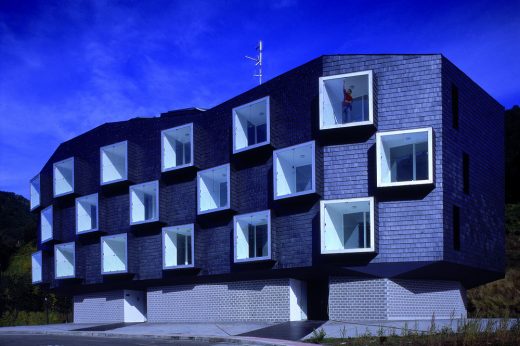
photography : Ignacio Martinez and Jose Antonio Ruiz
Social Housing for mine-workers in Asturias
Comments / photos for the Musical Studies Centre in Santiago de Compostela Spanish Architecture page welcome

